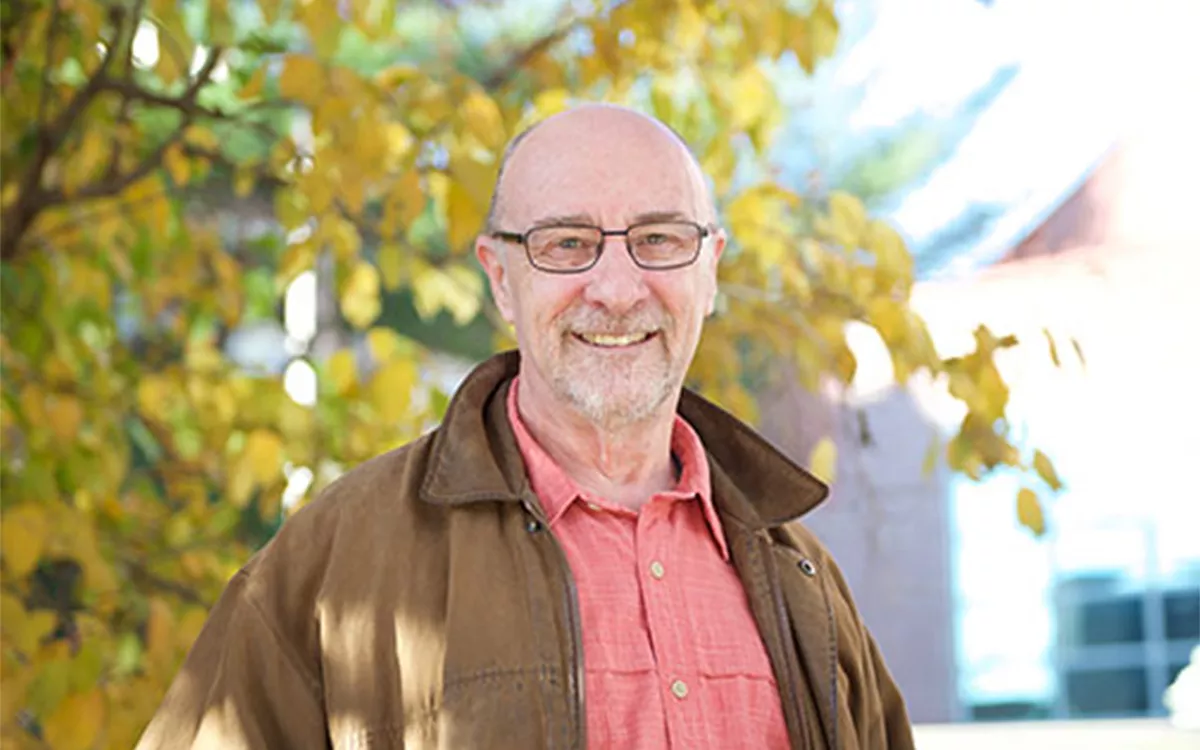Spine surgery provides relief for professor with back and leg pain

Steven Clegg assumed the pain would go away on its own.
It didn’t.
For the first several months of 2015, walking had become almost unbearable for Steven due to pain in his lower back that extended to his right buttock and down to the calf on his right leg.
“I’d be hobbling by the time I got from my lab to my car at the end of the day,” says Steven, an Iowa City resident and professor of microbiology at the University of Iowa. “And each day felt like it was getting worse.”
Steven went to see his primary care doctor at the UI Family Medicine Clinic, who prescribed physical therapy. When these treatments didn’t help, he referred Steven to orthopedic surgeon Cassim Igram, MD, a spine care specialist in the UI Department of Orthopedics and Rehabilitation.
Igram ordered an MRI, which showed that Steven had a synovial cyst, a fluid-filled sac that had formed in the area between two vertebrae in his lumbar spine (lower back).
Synovial cysts develop in the synovium, a thin layer of soft tissue that produces fluid to lubricate the joints between vertebrae. As adults get older, these joints deteriorate, which can lead to a buildup of fluid to protect the joints. A cyst forms when some of this fluid “leaks” from a joint but remains in the synovium, creating a bulge or protrusion.
A synovial cyst that grows too large can put pressure on the spinal nerves, Igram notes.
“This often leads to pain that starts in the lower back and radiates down one or both legs,” Igram says. “For many of these patients, standing or walking for extended periods of time can become very difficult.”
As Steven’s cyst had grown, it pressed onto a spinal nerve, which led to the pain in his lower back and leg.
To treat the condition, a surgical procedure called a laminectomy is performed. Also known as decompression surgery, this involves removing a small piece of the vertebra (lamina) in order to locate and safely remove the cyst, thereby relieving pressure on the nerves.
Steven had his surgery in June 2015. The procedure was a success, and he was able to go home the following day. Six weeks later, after follow-up visits with Igram and post-surgery physical therapy, Steven was cleared to return to work. Most important, he was pain-free in his lower back and leg.
“The relief was immediate,” Steven says. “I had waited a long time before getting help, so it was a remarkable feeling to have that pain gone.”
Steven notes that he has arthritis in his hips, which likely will mean hip replacement surgery in the future. For now, however, walking—whether it’s across campus or around town—is once again an enjoyable activity, thanks to Igram and his surgical team.
“Obviously his surgical skills are very good, but what struck me about Dr. Igram was that he sat down and told me everything I needed to know,” Steven says. “He was prepared to stay until all my questions were answered and I was satisfied with what was going to happen. I really couldn’t be more pleased with the results.”
— David Pedersen
Winter 2016